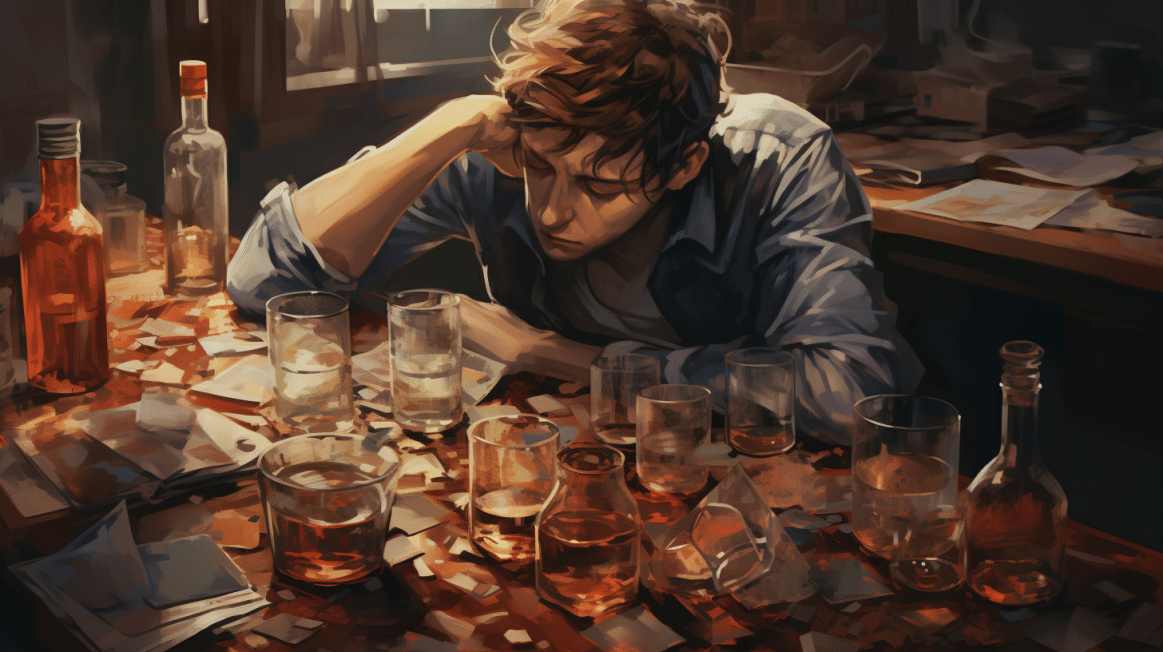Researchers have identified a powerful combination of drugs that may help treat alcoholism by reducing cravings and blocking relapse.
The dual treatment virtually wiped out binge drinking and heavy drinking in an animal model of alcohol addiction.
Key Facts:
- Rats treated with both a probiotic and antioxidants showed a dramatic 90% decrease in relapse-like binge drinking after a period of abstinence.
- The probiotic Lactobacillus rhamnosus GG (LGG) reduced dopamine levels in a brain area involved in addiction and reward.
- The antioxidants N-acetylcysteine and acetylsalicylic acid increased levels of proteins that remove excess glutamate, a chemical messenger involved in addiction.
- The combined treatment had an additive effect, suggesting the two drugs work via complementary mechanisms to suppress alcohol cravings and intake.
Source: Drug & Alcohol Dependence 2022
Blunting Brain Chemicals That Fuel Addiction
The motivation to seek and consume alcohol arises in part from dysregulation of two key signaling chemicals in the brain’s reward circuitry – dopamine and glutamate.
Dopamine surges in this region reinforce drinking behaviors, while excess glutamate drives cravings.
Treatments that restore balance to these neurotransmitter systems could be a lifeline for those struggling with alcohol use disorder.
In a new study published in Drug and Alcohol Dependence, researchers explored the anti-addiction potential of a probiotic supplement and antioxidant combination therapy in rats.
Their results identify a dynamic duo of compounds capable of simultaneously normalizing both brain dopamine and glutamate signaling.
Alcohol abuse is a chronic relapsing condition where craving-induced relapse is a major obstacle preventing recovery.
Findings indicate that the administration of well-tolerated probiotics together with antioxidants may be of value in curbing cravings and supporting long-term sobriety.
Rat Model Mimics Human Addiction Patterns
The study utilized rats that had been selectively bred to readily consume large amounts of alcohol.

Their drinking behavior mimicked many facets of human alcoholism, including chronic heavy intake, bouts of binge drinking, and the ability to relapse after periods of abstinence.
To model alcohol abstinence and relapse, the rats were given continuous access to an alcohol solution for 33 straight days, followed by 2 weeks without access.
This deprivation period intensified their craving and motivation to drink.
When alcohol was reintroduced, the rats immediately binged on it, a phenomenon known as the alcohol deprivation effect (ADE).
The ADE reflects the temporary increases in alcohol intake that often occur when people with alcoholism attempt a period of abstinence or controlled drinking.
This animal model allowed researchers to evaluate medications capable of preventing the escalation in drinking and heavy relapse seen in human alcoholics after abstinence.
Antioxidants Boost Brain’s Glutamate Removal System
First, the researchers explored the impact of enhancing the brain’s capacity to clear away excess glutamate.
They treated rats with a combination of the antioxidants N-acetylcysteine and acetylsalicylic acid (aspirin) during the period of alcohol abstinence.
Antioxidants counteract oxidative stress, a key consequence of alcohol toxicity.
Oxidative stress damages cells, including astrocytes – specialized brain cells that regulate glutamate signaling.
By shielding cells from oxidative damage, antioxidants can boost the activity of glutamate transporters found on astrocytes.
These transporter proteins remove glutamate from synapses, the junctions where neurons communicate.
Lowering synaptic glutamate dampens craving-related signaling and weakens the motivation to drink.
Analysis of brain tissue confirmed that antioxidant treatment increased levels of two glutamate transporters (xCT and GLT-1) by 60% in the nucleus accumbens, an area important for addiction.
The administration of N-acetylcysteine plus aspirin induced marked increases in proteins crucial for glutamate clearance from synapses.
This inhibits the hyper-glutamatergic state thought to drive craving and binge drinking.
Probiotic Lactobacillus Lowers Brain Dopamine
Next, the researchers explored whether modulating dopamine signaling would confer additional anti-addiction benefits.
They treated rats with a strain of probiotic bacteria called Lactobacillus rhamnosus GG (LGG).
LGG supplementation indirectly decreases dopamine activity in the nucleus accumbens by driving up levels of a protein called fibroblast growth factor 21.
This factor reduces dopamine signaling by increasing activity and expression of the dopamine transporter – a protein that removes dopamine from synapses.
Analysis of brain tissue confirmed that LGG treatment increased dopamine transporter levels by 50%, which would translate to less dopamine signaling.
LGG administration effectively increased the main mechanism for dopamine removal from synapses – the dopamine transporter.
This reduces dopamine availability and signaling, blunting the motivation for alcohol.
Combined Treatment Offers Enhanced Protection
Finally, the researchers tested whether combining the antioxidant and probiotic therapies would provide greater protection against relapse drinking.
Rats received either:
- No treatment
- LGG only
- Antioxidants only
- LGG + antioxidants
Remarkably, those that received the combination therapy exhibited an additive 90% decrease in binge-like alcohol consumption during the first hour of renewed access.
Over the full 24-hour re-access period, the dual treatment conferred a robust 75 to 85% reduction in alcohol intake.
Co-administration of LGG and antioxidants resulted in a near complete blocking of relapse drinking, with effects stronger than either compound alone.
This highlights the additive benefit of simultaneously targeting brain glutamate and dopamine signaling.
Furthermore, the combined treatment completely reversed oxidative damage and normalized the balance between oxidized and reduced glutathione in the hippocampus – a brain area involved in learning, memory, and addiction.
Potential New Behavioral Intervention for Alcoholism
Currently, only three medications are FDA-approved to treat alcoholism – disulfiram, naltrexone, and acamprosate.
But these drugs are modestly effective at best.
The probiotic-antioxidant combo identified in this study has strong potential as an adjunctive behavioral intervention.
Both LGG and antioxidants are relatively safe, widely available, and easy to administer.
Human trials will be needed to evaluate the efficacy of this combination therapy in reducing harmful drinking patterns.
If successful, this strategy could provide those struggling with alcohol addiction with a powerful new tool to regain control over their lives.
References
- Study: A dual treatment blocks alcohol binge-drinking relapse: Microbiota as a new player
- Authors: Fernando Ezquer et al. (2022)







